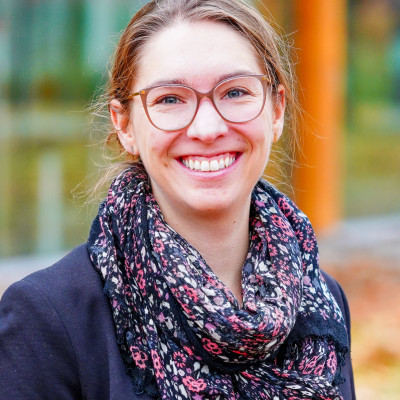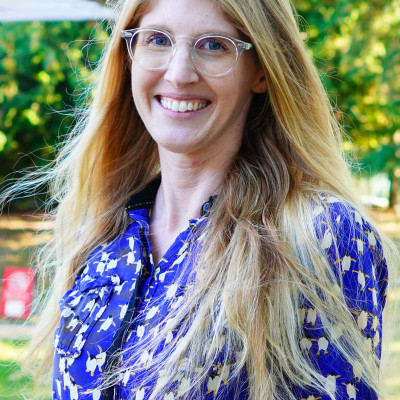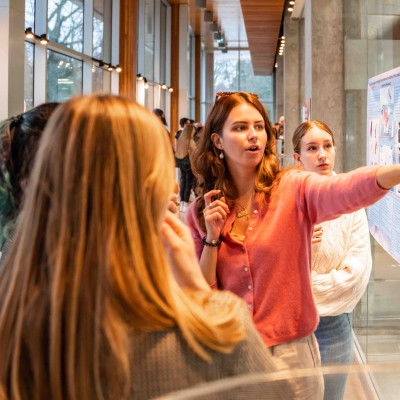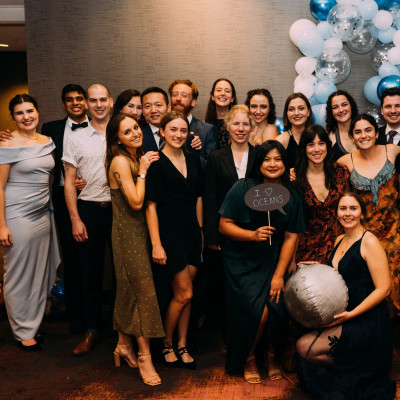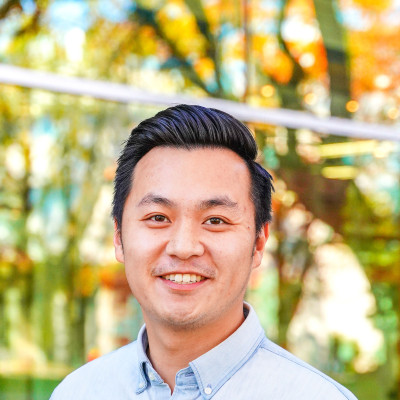News
Stay up-to-date with what's happening in EOAS
New Geophysical Inversion Facility Director - Dr. Lindsey Heagy
Dr. Lindsey Heagy, Assistant Professor at EOAS, has taken a new role as Director of UBC-Geophysical Inversion Facility (UBC-GIF).
Dr. Heagy is interested in data science and inverse theory applied to questions in resource exploration, groundwater, and environmental studies. She is also a faculty member of UBC’s Mathematics of Information, Learning and Data (MILD) group, focusing on machine learning and inverse problems. Her research group primarily focuses on machine learning and inversion methods with geophysical data including electrical and electromagnetic data as well as potential fields (gravity and magnetic data) to characterize the subsurface.
“I am very excited to be taking on the role of director of the Geophysical Inversion Facility (GIF),” said Dr. Heagy. “We are at an important point in time for near-surface and applied geophysics. There are significant opportunities for geophysics to play a role in solutions to challenges we are facing in society, especially in light of the climate crisis. Locating and managing groundwater, monitoring CO2 sequestration, characterizing permafrost loss and other impacts of climate change, and importantly locating the mineral resources we need to facilitate the energy transition, are all applications where we require the ability to image the subsurface. Geophysics gives us the ability to do this by measuring data over the surface of the earth that are sensitive to variations in physical properties of the subsurface. The Geophysical Inversion Facility is focussed on developing computational methods for extracting insights from geophysical data.”
Over the past 30 years, GIF research, under the leadership of Doug Oldenburg, has laid the foundation for the ability to simulate and invert a wide range of geophysical data, including gravity, magnetics, electrical, and electromagnetic data to obtain physical property models of the subsurface. “We now have the ability to solve problems that work with hundreds of thousands of data where we are estimating millions of model parameters. The next generation of GIF will build upon this foundation and integrate advances in machine learning,” said Dr. Heagy.
Dr. Heagy also shared about what she and the GIF hope to achieve in the next few years. “Our goal is to contribute to solutions of problems that are important to society. Locating mineral resources, managing groundwater, monitoring CO2, or remediating land are inherently interdisciplinary questions. Geophysics has a role to play, and the more that we can integrate with other disciplines, the more value geophysics can bring to the table. Our research develops computational methods that enable the integration of information, including geophysical, geological, geochemical, and other data to obtain insights about the subsurface. GIF has established itself as a leader in numerical simulations and inversions; in the next few years, an emphasis of our research will be on the integration of machine learning with inversions.”
“Two important components that have contributed to the success of GIF have been the close collaboration with the mining industry, which has provided data and research questions, and the subsequent dissemination of our work through the distribution of production-quality software. In our next phase, we plan to continue working with industry-relevant data sets to help formulate our research questions and solutions, and to keep distributing software to enable this work to be useable by others. The GIF Fortran codes are widely used by industry and academic groups worldwide. In the next few years, we will transition our model of software dissemination to an open-source model of development, through the SimPEG project. Collaborations through SimPEG have already facilitated humanitarian projects aimed at locating potable drinking water, as well as new ways to collaborate with industry because anyone can use, build upon and contribute to the project. I am looking forward to exploring new modes of collaboration that are enabled by the transition to an open-source model of dissemination.”
“GIF 2.0 is composed of a talented team of students, postdocs, and research associates working on projects in mineral exploration, groundwater, CO2 sequestration, and environmental applications. Connections with industry provide context and data on problems that are important to solve, and open-source software provides avenues for our work to contribute to solutions. We have the ingredients to make some meaningful contributions and I am excited to see what we can achieve together,” said Dr. Heagy.
To learn more about the UBC-GIF, such as their program, people, research and publications, software: https://gif.eos.ubc.ca/about
Listen to our podcast with Dr. Heagy: https://podcasts.apple.com/ca/podcast/on-earth-with-dr-lindsey-heagy-geo-data-scientist/id1562034229?i=1000525904011
How the largest migration on Earth might help combat climate change
Alexis Bahl, PhD candidate in oceanography at UBC’s Department of Earth, Ocean and Atmospheric Sciences and the Institute of Oceans and Fisheries, and three other UBC scientists have set out for an expedition to the Southern Ocean to study how salps, a type of tiny gelatinous zooplankton, can help remove carbon from the atmosphere. Along with 40+ additional scientists with different areas of focus, the UBC team boarded the Alfred Wegener Institute’s Polarstern icebreaker on October 1st and they will come back on November 17th. Scroll down to watch our interviews with Alexis and Dr. Pakhomov.
Salps travel from deep in the ocean to the surface at night and return to the cold-water depths upon sunrise, forming the world’s largest migration. “This migration, it occurs when the sun sets, and then they go up to the surface and feed on phytoplankton, which are rich in carbon. So the salps, by proxy, are rich in carbon. And then when the sun rises, they move back down to the depths to decay,” said Alexis. “So they swim down and excrete, effectively transporting carbon to the sea floor where it’s stored for centuries. Because the Southern Ocean stores about 40 per cent of global carbon, it’s important to understand how much of a role this organism will have in mitigating climate change.”
Alexis is part of the macrozooplankton and micronekton team in this journey. Funded by the National Geographic Society, the team is led by EOAS UBC professor Evgeny Pakhomov and comprised of Lora Pakhomov, Alexis Bahl, and Florian Lueskow, with a particular interest in collecting the most abundant tunicate species in the Southern Ocean.
Read more:
Alexis' expedition blog: https://www.alexisannebahl.com/blog
Vancouver Sun: UBC researchers embark on voyage to study how climate change affects tiny ocean creature
Radio Canada: 48 jours en Antarctique pour photographier la salpe, un plancton voyageur
Early Career Ocean Professionals: Alexis Bahl: an ECOP exploring salps in the southern ocean
UBC news: How the largest migration on Earth might help combat climate change
Topics in Earth and Planetary Sciences Capstone
If you wandered through the Earth Sciences Building this week you may have noticed the walls of the lobby featured a dozen new posters covering a diverse range of topics. The recent poster session was the culmination of weeks of work by EOSC 212 students.
EOSC 212: Topics in Earth and Planetary Sciences has been taught by Prof. Mark Jellinek since 2006. Since its origin, EOSC 212 has been about pushing students to break down their preconditioned approaches to learning to make space for questioning and open discussion of presented information. The course is designed to build critical reading, thinking, writing, and communication skills. Students are evaluated on their ability to effectively communicate complex concepts through writing and mind maps, rather than their test taking abilities. Mind maps allow students to visualize the connections between topics so the big picture becomes easier to convey. This visualization skill translates across disciplines, but is especially useful in Earth Sciences where subjects are more often than not deeply interconnected.
Finally, students are asked to produce a research poster where they chase down a question of their own relating to a dataset of their choice. The resulting posters are a collection of diverse and creative ideas with topical titles such as:
-
How and to what extent did COVID-19 affect greenhouse gas emissions?
-
What drives tropical cyclones and what is the sensitivity of drivers to global warming?
-
Does “fracking” affect groundwater resources significantly?
-
How does ozone depletion affect Earth’s ecosystems?
-
Can atmospheric rivers affect the stability the Larsen Ice shelf
-
How has glacial retreat in central Asia affected slope stability?
-
How is the history of seafloor spreading and subduction expressed in the age distributions and chemistry of rocks?
-
How is the accelerating instability of Greenland ice affecting human settlements?
-
What is the spatial character of recent extreme melting events on Greenland?
-
How will sea level rise affect Vancouver?
-
Is climate change going to shred tourism in Vancouver?"
Click here to see posters from previous years.
EOAS 25th Anniversary Gala
On Saturday 26th November 2022, we held a Gala Dinner to celebrate (albeit a little late) the 25th anniversary of the UBC EOAS Department. This event has been over a year in the planning, organised by a driven group of graduate students from our Department: Ruth Moore, Eva Gnegy, Catriona Breasley, Sacchi Pillai and Cara James. With a turnout of around 200 people, including all five Heads of the department, a three-course dinner, celebration cake, speeches and dancing until late in the evening, the event was definitely one to remember.
For the opening remarks reflecting on the anniversary by Philippe Tortell, Head of EOAS, please scroll down to the bottom or click here.
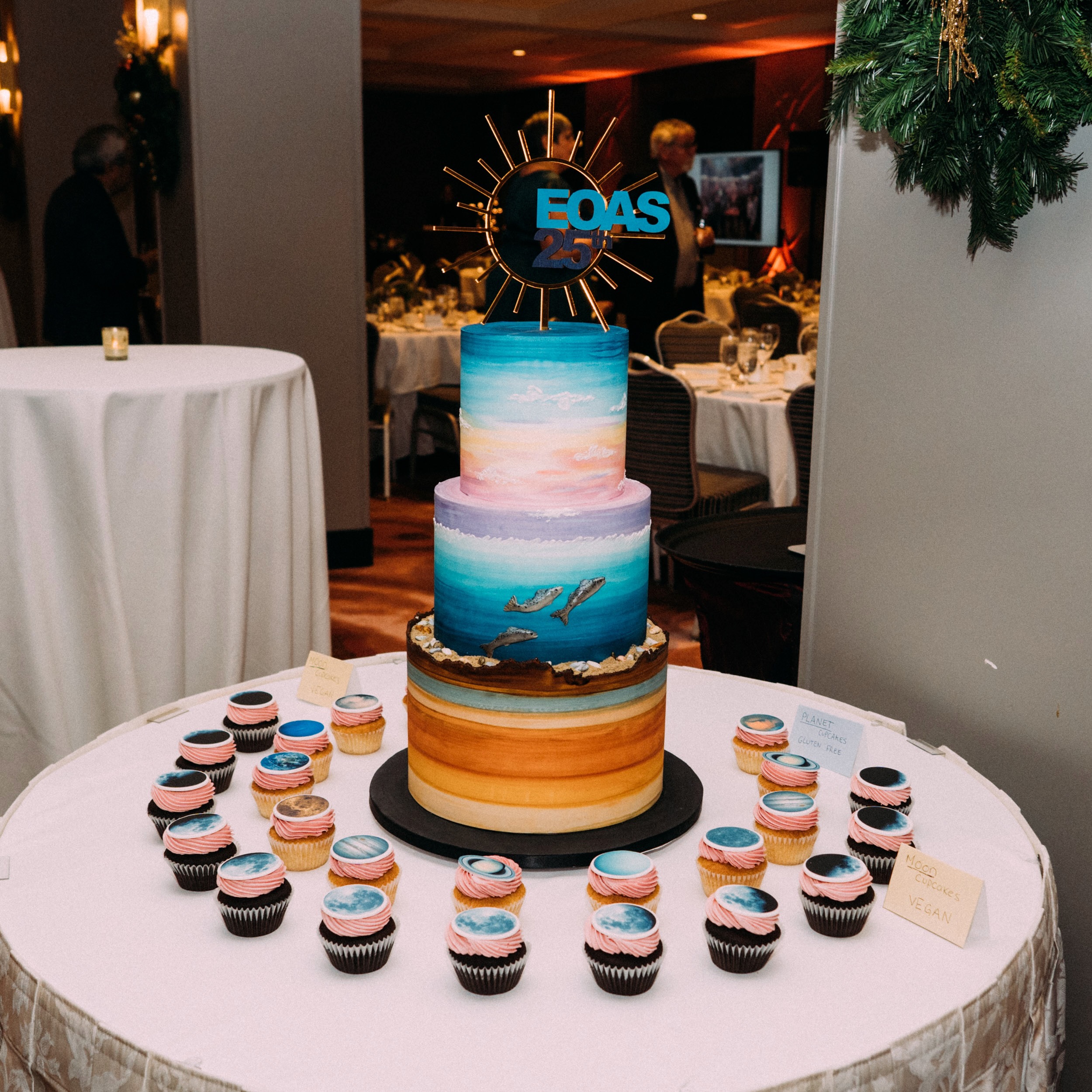
Celebration cake depicting (bottom to top) the Earth, Oceans and Atmosphere. With moon and planet vegan and gluten-free cupcakes
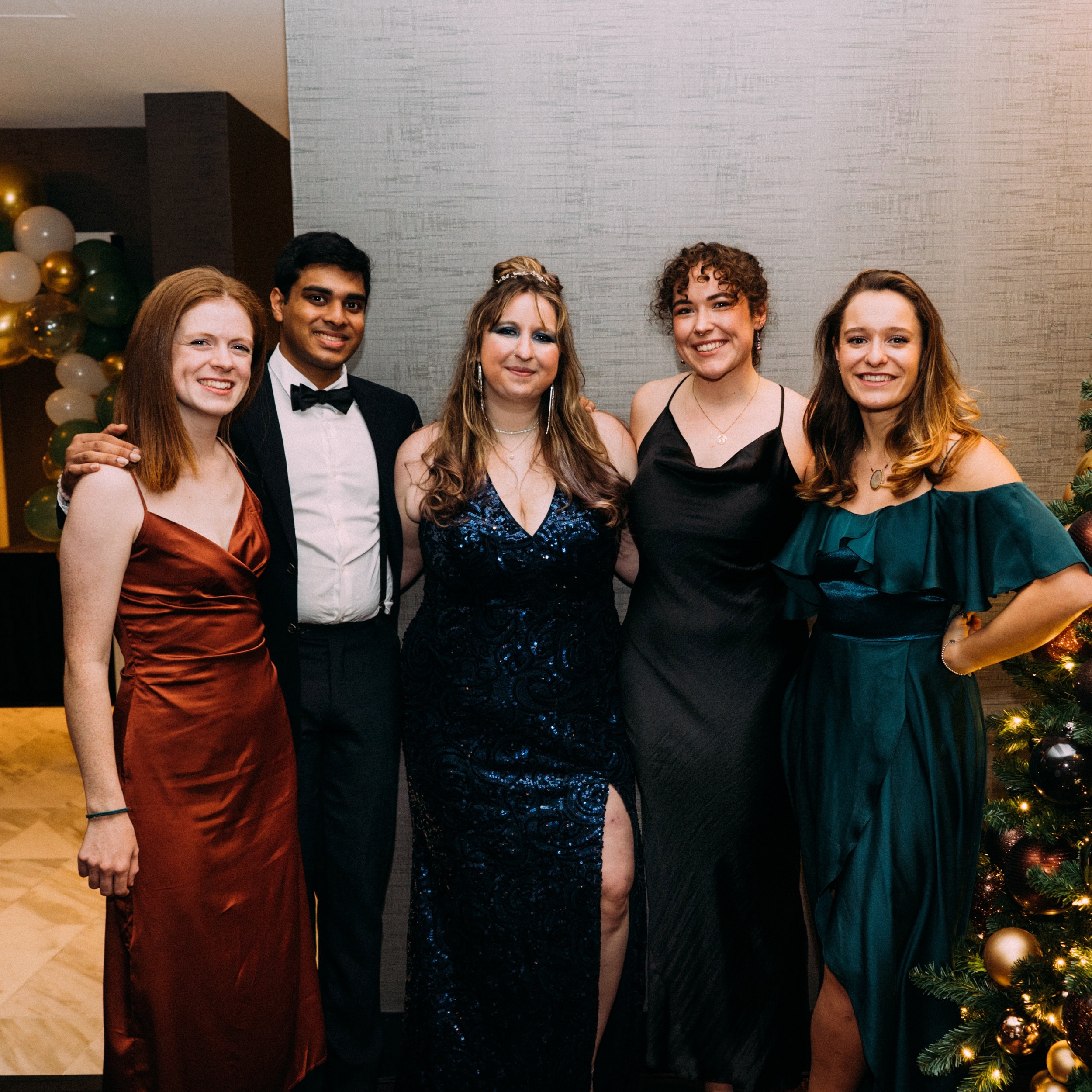
Organising committee, from left to right: Catriona Breasley, Sacchi Pillai, Eva Gnegy, Ruth Moore, Cara James
We started the night with a champagne reception, as faculty, staff and graduate students had a chance to chat to each other outside of the usual laboratory or classroom setting. As everyone found their seats, Philippe Tortell, the current department head, gathered around with the four past holders of the same role (Robert Ellis, Paul Smith, Greg Dipple, Roger Beckie) and welcomed everyone to the event, inviting them to take their seats as the starter was served.

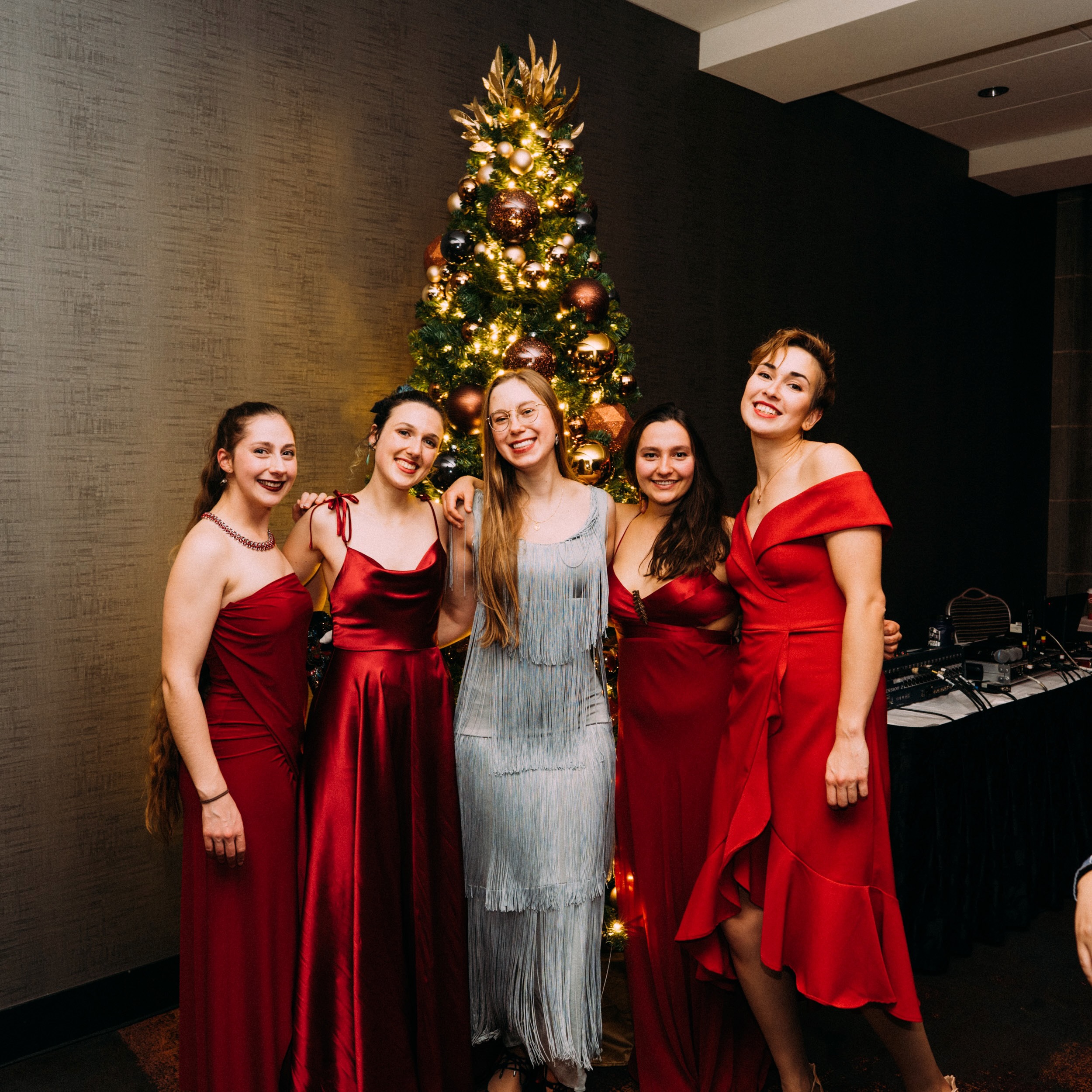
EOAS graduate students pictured enjoying a rare evening spent out of lab coats and fieldwork gear
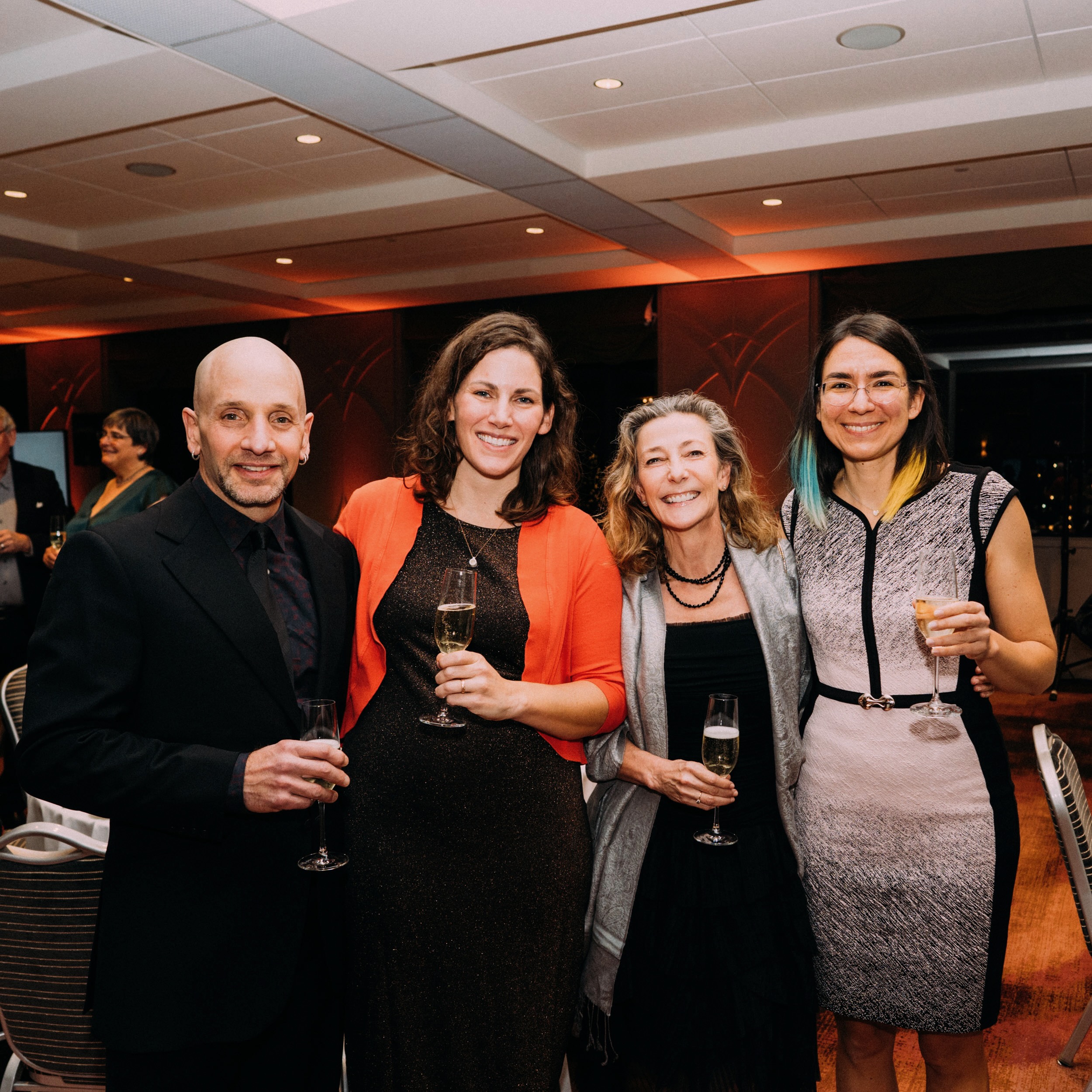
EOAS Faculty (left to right: Mark Jellinek, Kirsten Hodge, Catherine Johnson, Valentina Radić)
Over the course of the next couple of hours, as we dined on plates such as miso roasted ling cod and strawberry mille feuille, we were treated to a range of presentations and speeches that took us through the past, present and future of not only our department but also the field of Earth Sciences in general. Paul Smith, department head from 2000 – 2009, spoke about the tumultuous journey that was taken to design the teaching courses as we see them today, and how the design of our beloved Earth Sciences Building on campus came to be. Philippe Tortell, current department head, talked about the present state of Earth Sciences and the incredible work going on in our department today. Emily Fischer, alumnus of UBC, shared with us a short video about the challenges to come in our field and how she has high hopes for the students in the room. Finally, recent graduate students Katrin Davidsdottir, Julia Jeworrek and Yohan Gilchrist wrapped up the presentations by looking ahead to how we can adapt our research to face these future issues together.
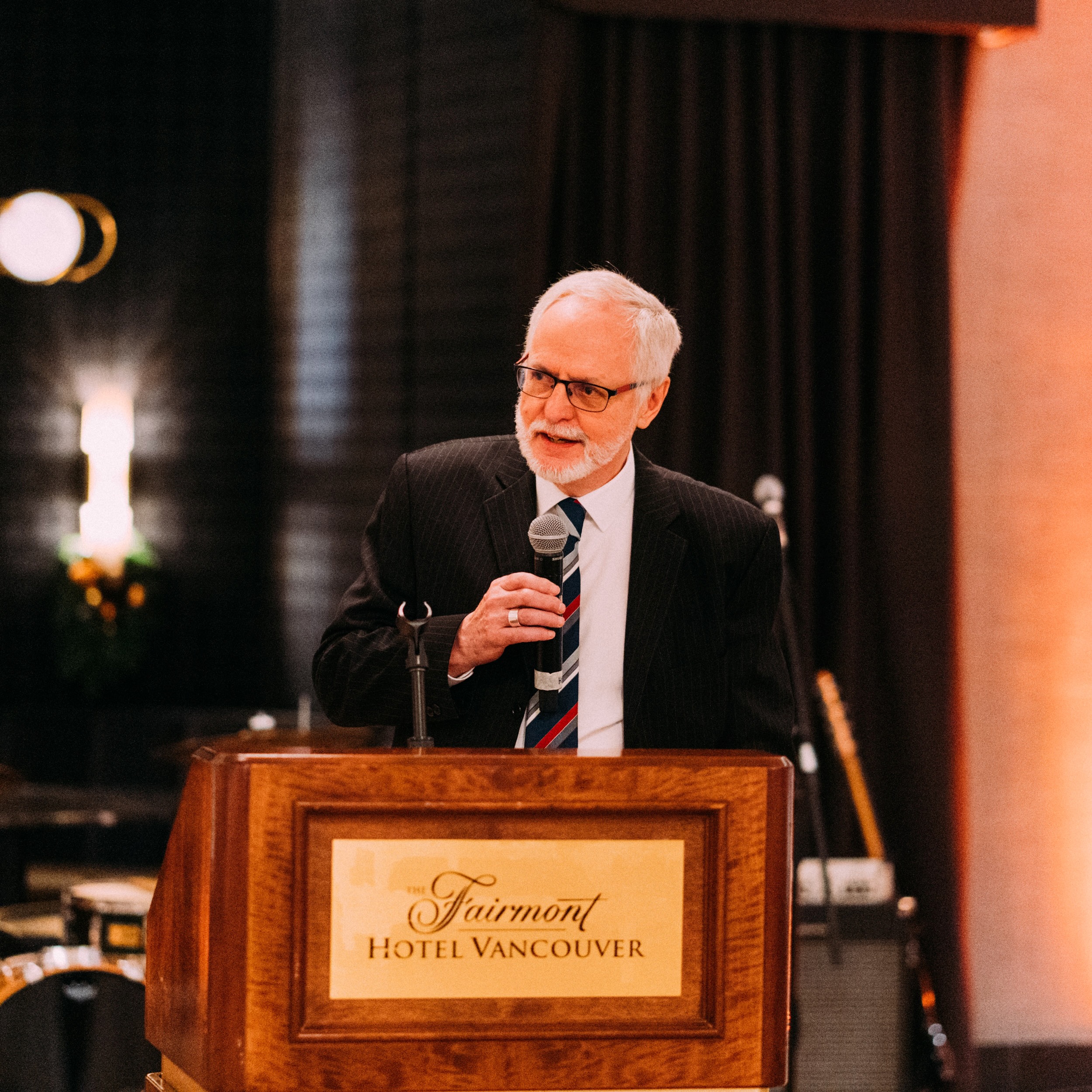
Paul Smith, department head 2000-2009
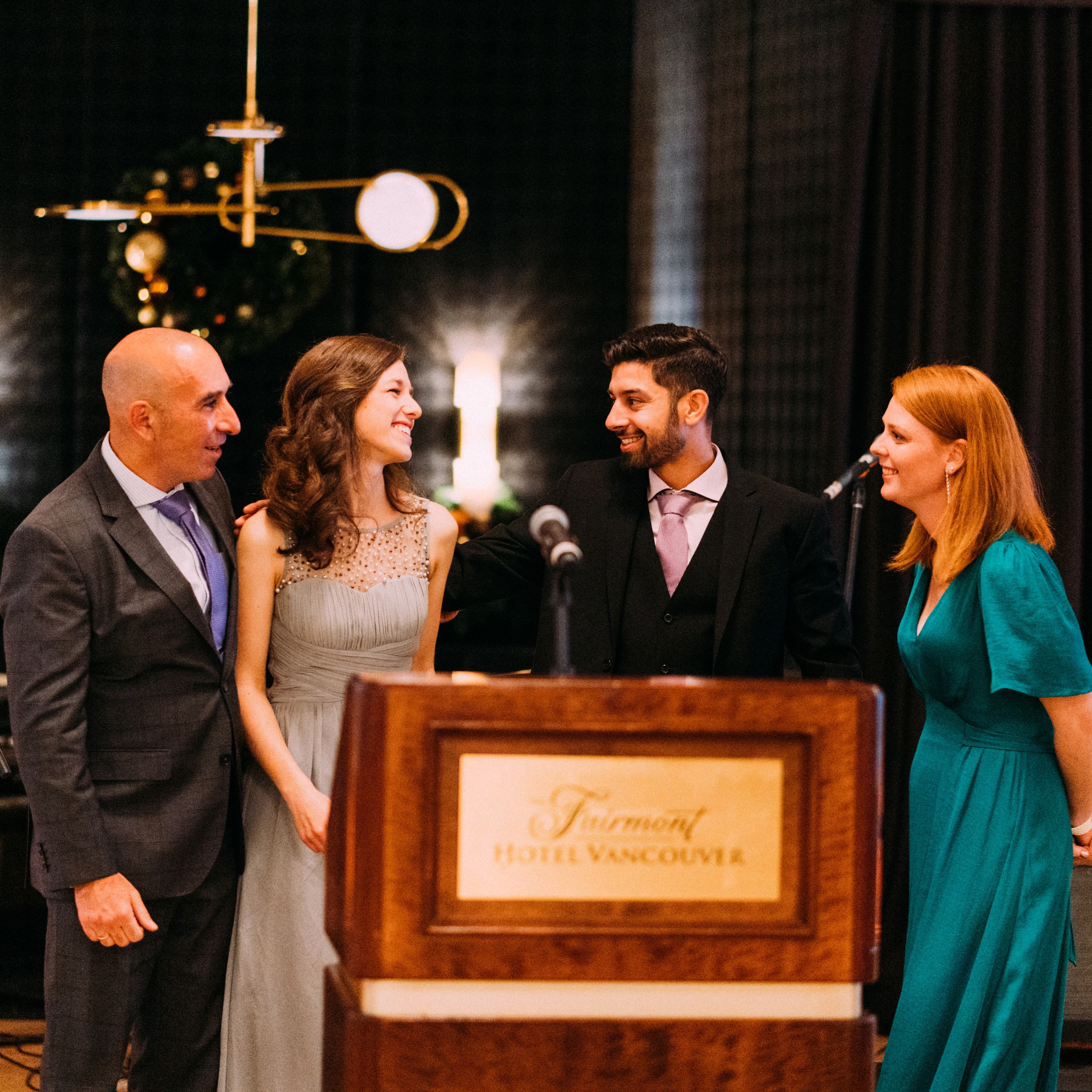
The final presenters for the evening, from left to right, Philippe Tortell, Julia Jeworrek, Johan Gilchrist and Katrin Steinthorsdottir
With the end of the meal came the cutting of the EOAS Celebration Cake, and the band, The Werewolves, started to play covers of hits young and old to please the diverse age range in the crowd. Within minutes the dance floor was full, and essentially stayed that way for the remainder of the night. Who knew Earth Scientists were such keen dancers?!
All-in-all, an incredible night to be remembered, anyone else counting down to the 30th anniversary…?
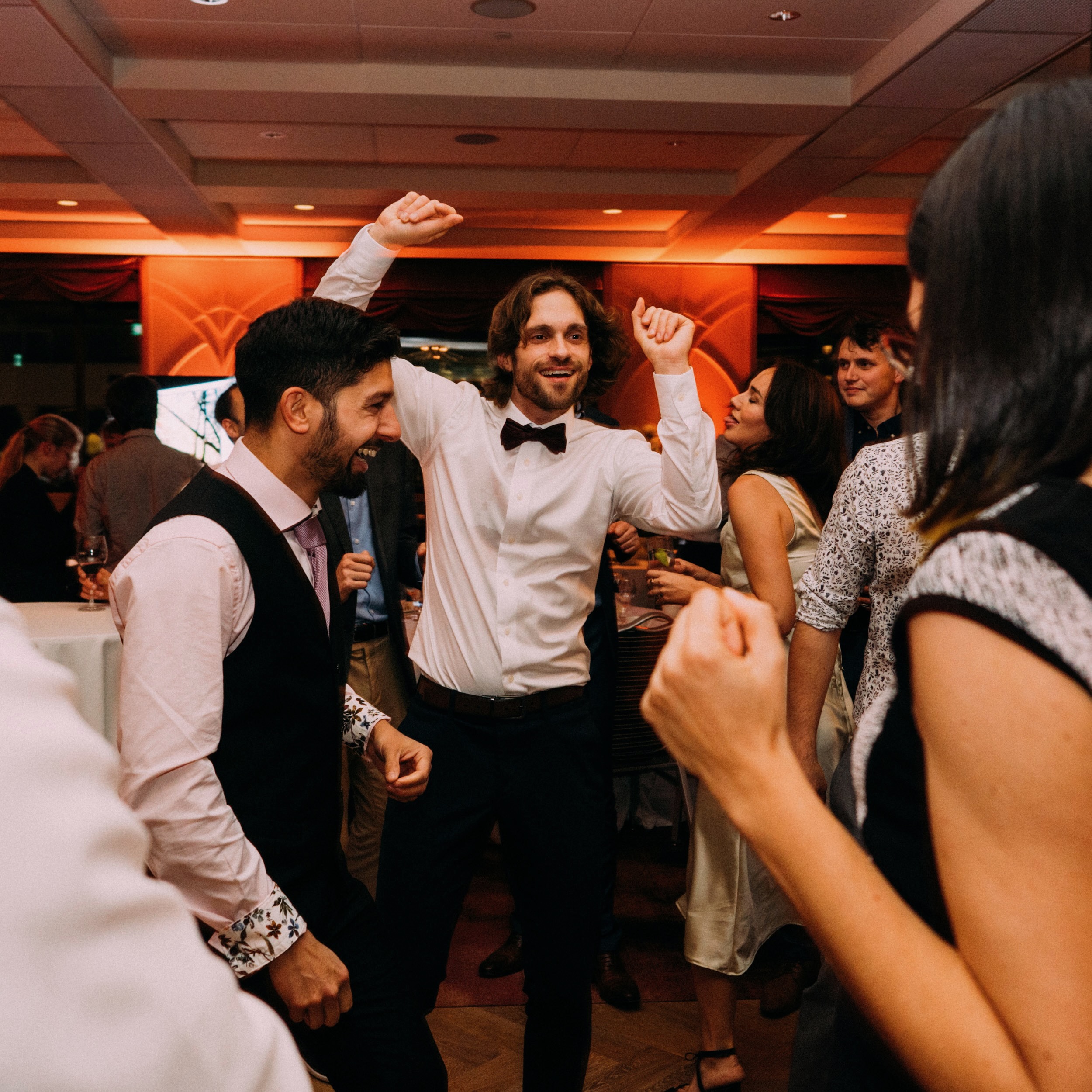
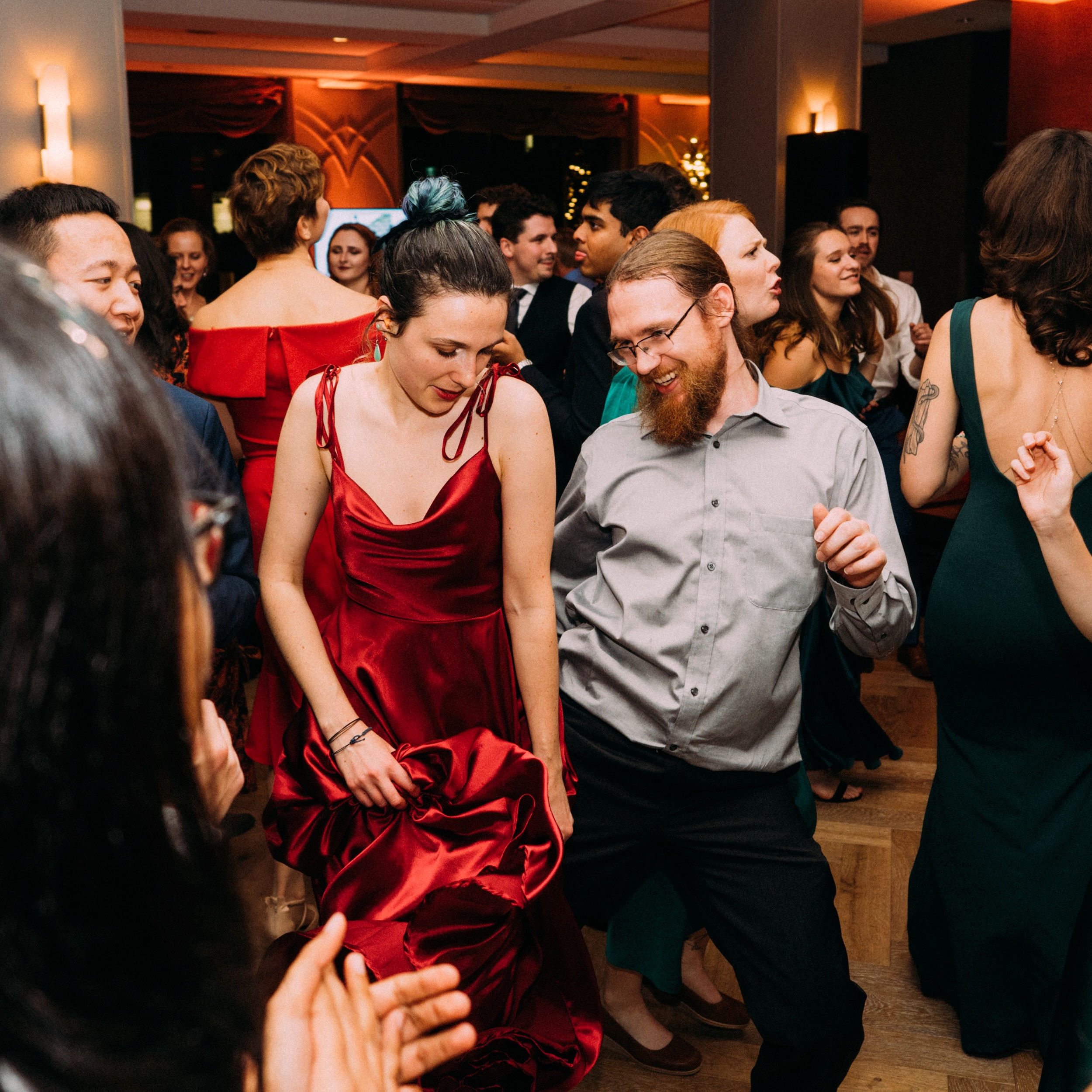
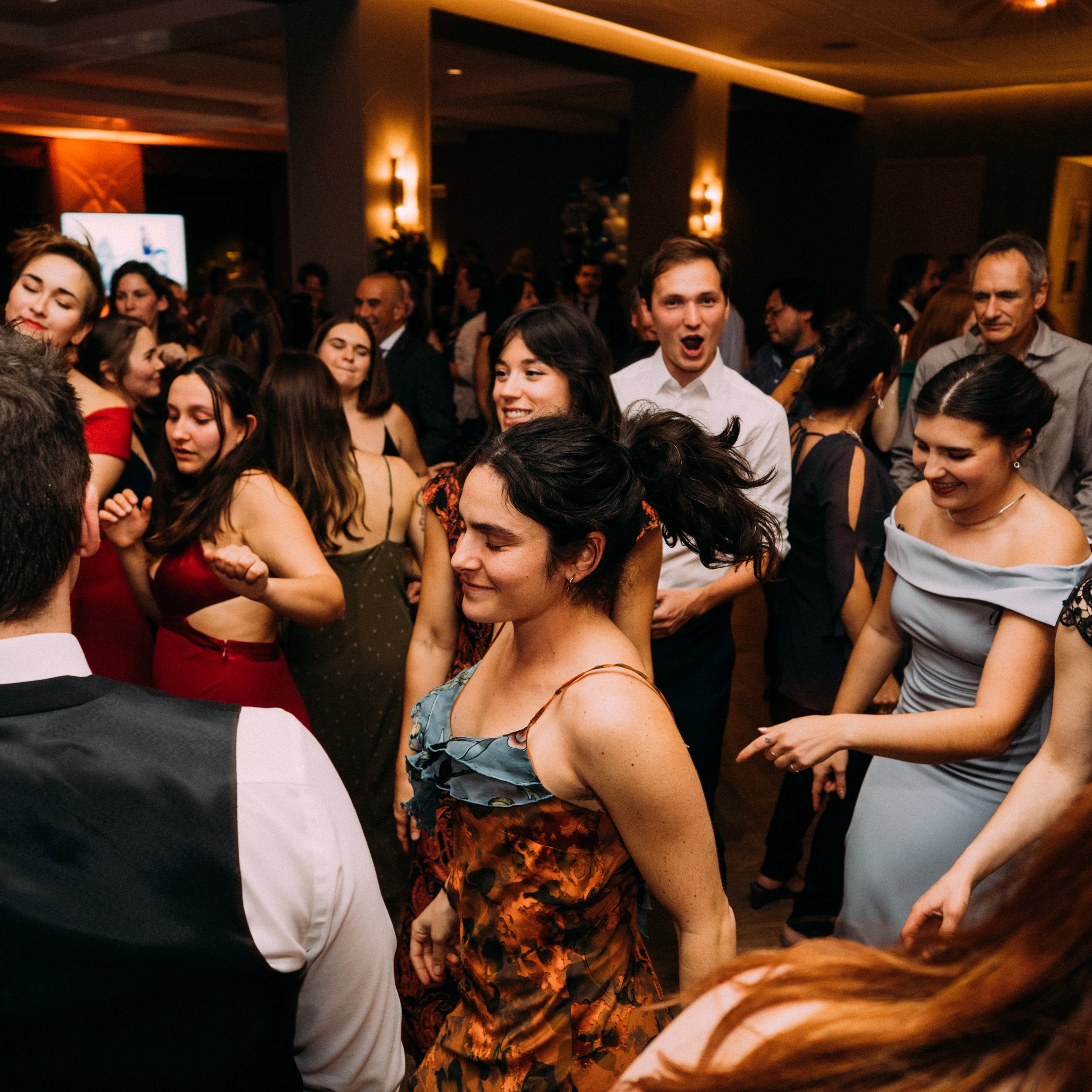
Opening remarks by Philippe Tortell, Head of EOAS
November 26, 2022
Dear colleagues, friends and guests,
I’m delighted to welcome you all here for this very special evening, as we gather on the traditional, ancestral and unceded territories of the Coast Salish peoples to celebrate an important milestone in the history of the EOAS department. Twenty-five years ago, a group of scholars was brought together, likely against the will of many, to begin an experiment in cohabitation and coexistence. Tonight, we will celebrate the remarkable achievements of this group and those that have followed in their footsteps. We will also reflect on how we and the society around us have evolved over the past quarter century, and consider the challenges and opportunities that face us into the future.
As we reflect on the past twenty-five years of our history, roughly the length of a single human generation, we must appreciate the multi-generational Indigenous history of these lands, going back thousands of years, during which First Nations people have gained deep insights into the inter-connectedness of the Earth system. From this perspective, our time together has been only the briefest interlude in a long story. And yet, over that short moment in time, our planet has seen unprecedented change.
A brief look back to the mid-1990s, when EOAS was amalgamated, is instructive. By that point, Earth observing systems and computer models were sufficiently advanced to clearly demonstrate a ‘discernable human influence on global climate’, as famously stated in the 1995 IPCC Assessment Report, which was a major impetus for the Kyoto protocol in 1997. That same year, just one year after the formation of EOAS, atmospheric pCO2 was 360 ppm and the last Indian residential school closed in Canada. It would be more than a decade before the Canadian government issued an apology, and nearly twenty years before the Truth and Reconciliation Commission of Canada issued its landmark report and recommendations.
Fast forward to 2022. Both our planet and our societies have changed remarkably. Climate targets have been set and missed again and again, as globalization – spurned by the creation of the World Trade Organization in 1995 – has vastly increased humanity’s consumption of natural resources. With increasing precision, our scientific tools are allowing us to document the significant negative impacts of these activities. Current atmospheric pCO2 is 415 ppm, nearly 60 ppm higher than in 1996. This rise over the past quarter century is more than half that observed over Pleistocene glacial-interglacial cycles, which have occurred over many thousands of years. Earth scientists have played a critical role in documenting these changes, along with the attendant impacts on Earth’s climate, sea-level, glacier melt, extreme weather, etc. We have also developed tools to predict what the future may hold with increasing certainty. But this information has not been sufficient to motivate relevant societal action. As a result, we have been increasingly called to reach out directly to key audiences outside of the ivory tower, connecting directly with broad sectors of civil society.
As we have gained a deeper understanding of human impacts on Earth’s biophysical systems, we have also come to better appreciate the devastating impacts of colonialism and racism in Canada and elsewhere. In a new era of Truth and Reconciliation, we are now called to walk together along a path of collaboration and mutual understanding, working to build new relationships built on respect and humility. These are the challenges of today, and the challenges of tomorrow, in which each of us must step forward.
This evening is about celebrating our past and our present, and reflecting on how our role as Earth scientists will evolve over the next 25 years, as we seek to work across disciplines and engage with the society around us. Several of tonight’s speakers will present some reflections to guide our thoughts, and each of us will also have a role to play as the evening unfolds. The evening is about reconnecting with old friends and colleagues, and also about building new relationships. I encourage you to consider that as you take your seats in a few minutes – see if you can meet new people, and expand your understanding of the diversity of our department.
Before we take our seats, I’d like to acknowledge some special guests. First, I’m delighted that we have been able to assemble all of the past Heads of the EOAS department, Bob Ellis, Paul Smith, Greg Dipple and Roger Beckie, each of whom has made many important contributions to our department. I would also like to acknowledge Ross Beaty, an alumnus from our department in the pre-merger days. Ross has been our greatest supporter, and his tireless efforts and generosity were critical in the construction of the Earth Sciences Building, our wonderful museum and many other facets of our department. And last, but certainly not least, I also want to acknowledge the hard work of several EOAS graduate students who put this evening together, Eva Gnegy, Ruth Moore, Cara James, Cat Breasley and Sacchi Pillai. They have put a huge amount of effort into planning this evening over many months. I think the results speak for themselves.
To conclude, I would like to offer a toast to the remarkable group of individuals, past and present, who have contributed so much to EOAS over the past quarter century. I would like to acknowledge my colleagues on the EOAS faculty, who have given many years of dedicated and passionate service to this department, contributing to research, teaching, student mentoring, and to the often-tedious job of committee work. I also salute our students and post-docs, who have been at the forefront of our research, and play a critical role in supporting teaching programs across the department. You keep us young and constantly challenge us with new ideas. You are the leaders of tomorrow, and the skills and knowledge you take with you from EOAS will be critical in solving some of our most important global problems. And to our research, technical and administrative staff, you are the unsung heroes who look after our infrastructure, equipment and operations. You do your work professionally, efficiently and quietly in the background. You manage the day to day operations of our department, allowing us to reach our full potential. To all of these individuals, I offer my deepest gratitude and appreciation. It has been a true honor to be part of EOAS for more than two decades, and I look forward to following our progress over the next quarter century. Cheers!
New in EOAS: Jason Yeung – Assistant Professor of Teaching
Check out our New in EOAS interview with Jason Yeung, Assistant Professor of Teaching in Geological Engineering who just started his position this September. Welcome Jason!
Q: Would you like to tell us a bit about yourself?
JY: I am a product of UBC's Geological Engineering program where I completed my undergrad and graduate degrees. After my undergrad I relocated to Edmonton where I worked in consulting, primarily in the Canadian sub-arctic region. Then I made my way back to Vancouver where I stayed in consulting and worked in the underground, tunnelling, and trenchless industry.
I was born and raised in Surrey with my two older sisters and a set of hard-working parents. My parents moved to Canada in the 80s from Brunei as ethnic Chinese immigrants. My sisters and I are first generation-university students, so the education my sisters and I received at UBC is something my family is very proud of.
Q: Is there any difference in the UBC Geological Engineering program between the time when you were in it and now?
JY: I think the students now are really bright and have a strong sense of awareness. You can see how they have a knack for using technology and how it is integrated into the way they think. The Geological Engineering program is great as usual, where students can build the fundamentals of geological engineering and the stepping stones to achieve whatever their goals are.
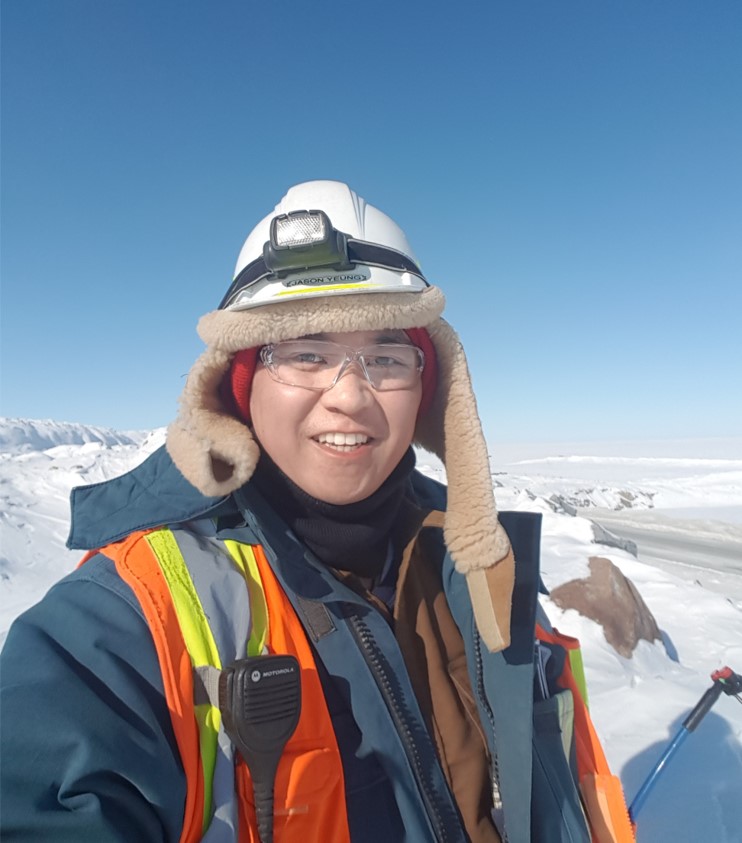 Q: What do you consider your major contributions and/or accomplishments so far?
Q: What do you consider your major contributions and/or accomplishments so far?
In my practicing career, some of my proudest contributions are the range of projects I have been involved with. In the sub-arctic region, I was a part of some neat projects like setting up and operating from scratch an advanced soil testing laboratory in a remote region, to being the resident field engineer for the construction of a frozen core dam. Locally, I am proud to have been involved in projects that directly benefit the community, such as designing and constructing tunnels and river crossing forcemains in the Lower Mainland to improve seismic resiliency in our water distribution network and expansion of wastewater treatment plants.
But to be honest, being in this current position and being able to have this conversation is a big accomplishment in my personal and professional life. Being in a position where I can influence the next generation of geological engineers is a big responsibility. People often ask me if this is my “dream” job, however being in this position often felt outside the realm of reality for me, so I often say this is my “fantasy” position.
My role here enables my passion for helping and mentoring others. I have always been known as “the old man” in a group because I’m an open book on sharing my experience and knowledge with those wanting to listen. I have naturally gravitated towards mentoring people from less advantaged groups or people looking for advice navigating the system, since I am able to see their perspective from experience. With my role now, I am excited to interact with students and people from all walks of life.
Q: How is it different for you as a professor compared to when you were a student in the program?
JY: I think there are some differences, but I also see more similarities between being a student and a professor. As a junior faculty myself, I am still a student learning and honing my craft of teaching and constantly wanting to improve myself, so I feel fortunate to be in a department that has many great resources and teachers to still learn from.
I think the primary difference between being a student before and a professor now is that as a student you take a range of courses and try to get by. As a professor, you focus on your courses for the semester, however each course requires more effort, attention to detail, and oversight of things behind the scenes that you don’t see or think of as a student.
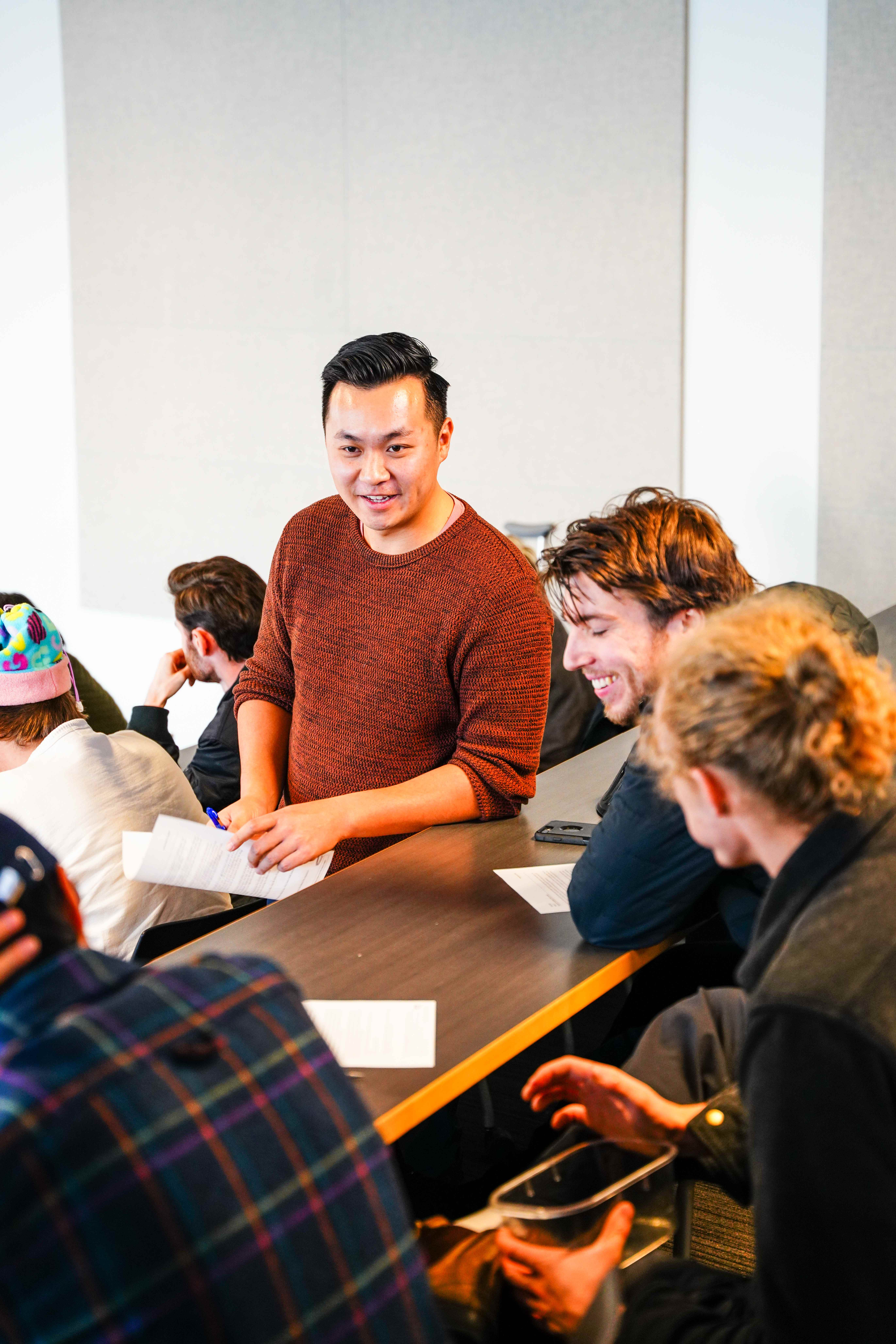 Q: Speaking of courses, what courses are you teaching this term and in spring?
Q: Speaking of courses, what courses are you teaching this term and in spring?
JY: I am currently co-teaching EOSC445—Engineering Design Project with Susan Hollingshead, which is the 4th year geological engineering capstone project that runs over two semesters. This course is a platform for students to bring together all the fundamental and foundational knowledge they’ve accumulated through their undergrad and apply it to real industry projects.
The other course I am teaching this semester is EOSC 330—Principles of Geomorphology. I am doing paired teaching with Scott McDougall and Brett Gilley. It has been a pleasure working with those two and Bean, and being able to learn from both their teaching styles.
In the spring term, I will also be co-teaching EOSC 240—Site Investigation with Susan Hollingshead. And next year, I’m planned to co-teach EOSC 210 – Earth Science for Engineers with Erik Eberhardt, which is a course where second-year engineering students even outside of the Geological Engineering program will get their first exposure to earth science.
Q: What do you hope the students who come to your class can come away with?
JY: Besides explicit learning goals, I hope that outside the classroom students can go outdoors and further appreciate the beauty of earth processes and the natural environment that surrounds us, especially in Vancouver.
In EOSC 240, I am excited about showing students how to manage geologic uncertainty. Imagine we are looking at a vast piece of land: What is this ground made from and how variable is it? How can we realistically gather information to characterize it? How can we put numbers to geology and assign design parameters to build on it? I hope they can take that philosophy of managing uncertainty and apply it to other aspects as well, like navigating through uncertainties of life.
In EOSC445, I hope that students can use this course as a platform where they can experiment with engineering design and team dynamics, and ultimately feel prepared for their journey after graduation.
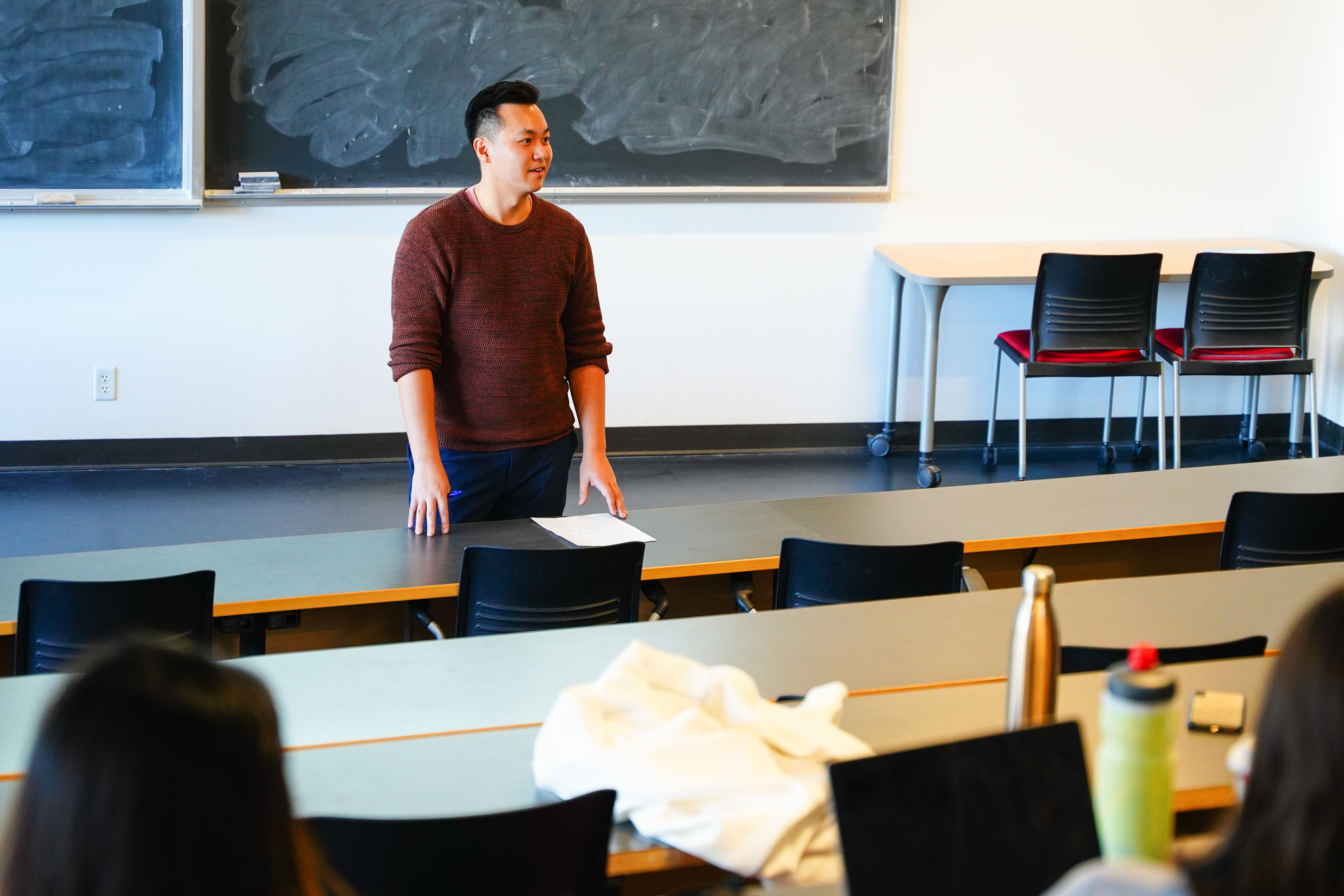
Q: What research topics are you excited about now?
JY: My current interests are in engineering pedagogy and curriculum and course development in the geological engineering program. I want to make sure our program is constantly evolving and developing with current societal and industry trends, and to find ways to bring those concepts innovatively and effectively into the classroom. One of my other focuses is to constantly seek areas or ways that teachers and instructors can cultivate a sense of belonging for students in the classroom and the whole university experience. I have been exposed to many great resources from Skylight and CTLT on inclusive teaching practices and creating positive classroom climate, and I hope to be able to further contribute to that area.
Q: What do you hope to achieve in the next few years at EOAS?
JY: I hope to be a part of developing and evolving the geological engineering program. The geological engineering group is having preliminary discussions on creating a specific geological engineering field school, so I am looking forward to being involved in that. Besides that, I hope to bring more awareness on the role geological engineers have on societal trends, like climate justice or equity, diversity, and inclusion. Over the years, I hope to be seen as a figure or resource in helping students navigate through their programs and careers. Overall, I am excited to be in the university environment where I’m encouraged to still be a student, be innovative, and cultivate an environment that promotes learning and growth.
Q: What do you do outside of work?
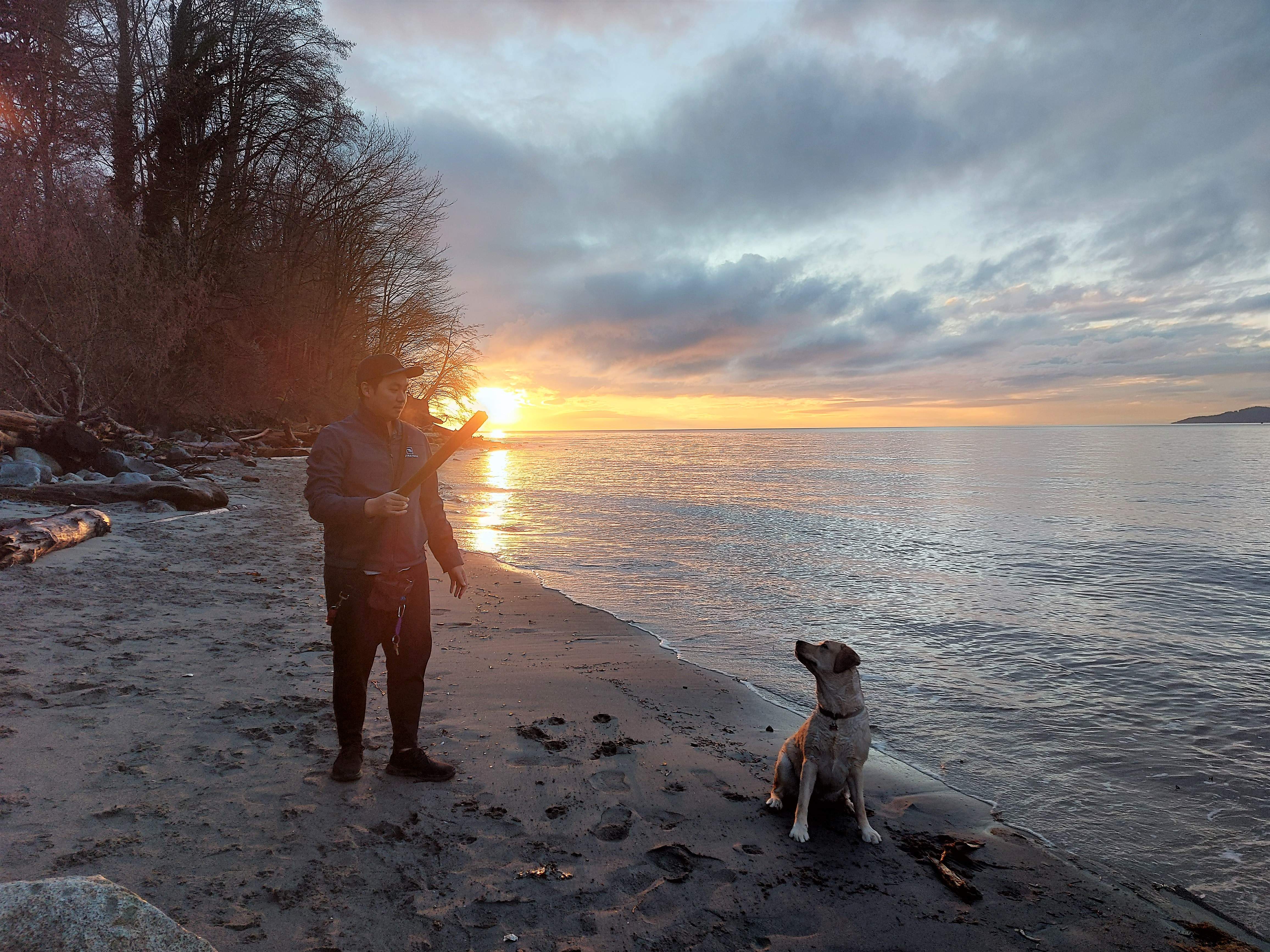
JY: I am a foodie. The Metro Vancouver region is a great place to be a foodie because there is so much diverse food; it has any type of cuisine you can think of. Besides eating, I like collecting vinyl records. I’m always amazed when I put a record on and drop the needle, how a black plastic disc can reproduce such a vibrant sound.
During COVID, I picked up a few hobbies and one of them being cycling. I enjoy cycling because I find it a means of moving meditation. Whenever I’m on my bike, I forget about stress and have a moment to be present. My second COVID project is my two-year-old Labrador retriever, who makes my life interesting every day. She is just a big ball of energy! Her name is Ava and we named her after the artificial intelligence robot from the movie Ex Machina. On the weekends, you can find me on a long walk in Pacific Spirit Park, going for a bike ride, or spending too much time figuring out what to eat!
With Vanier Scholarships – Elise Legarth
Elise Legarth, Vanier Scholar and PhD student in Atmospheric Sciences at UBC EOAS, originally from New Zealand
What path have you taken that has led you to a PhD at UBC EOAS?
I was not really sure what I wanted to do when I left school, but I had to pick something! I really liked Geography, so I chose to study a course called Earth Sciences and Agricultural Business at university, then went on to do a Master’s in Hydrology. Those are more related than they sound, especially because in New Zealand all agriculture is grass-fed, looking at the hydrological impacts on agriculture is a nice mix of hydrology and business applications.
In New Zealand, one key thing that we really struggle with in terms of getting our models to work is the lack of recent climate data, which is the input that has the biggest impact on your model results. We were using historical data to model the future, so it is not super accurate. This got me interested in how the climate and hydrology interact and I knew I wanted to move overseas, so I applied to come here to work in Dr. Roland Stull’s team.
What is your PhD project?
I am developing a new methodology to predict probable maximum precipitation and probable maximum flood. In layperson terms, it means if you need to build a bridge, you have to accommodate a certain flood level. How this is currently done is not particularly accurate, as we have seen here in BC and elsewhere with bridges being wiped out over the last couple of years. These current methods also do not take into account Climate Change, so I am working on a new and better method.
How will becoming a Vanier scholar affect the path of your PhD?
The obvious answer is the funding. This will help me attend conferences and a whole lot of things that our normal PhD funding would not cover. It also allows me to focus on my research and take up other opportunities rather than having to work part-time and as teaching assistant. Also, the prestige of it gives you a lot of connections.
Finally - what are you most excited about in the rest of your PhD project?
One of the things I am doing on the side that the Vanier scholarship has allowed me to pursue is to join the Atmospheric River Reconnaissance program run in San Diego. For this, we fly military planes out into atmospheric rivers and drop off a load of weather balloons into the middle of them, so we can better forecast them in future. I am part of the forecast team who helps decide where we should place the balloons to get the best data. But in simple terms, I am going to go to San Diego and fly into the center of huge storms in an Air Force plane – pretty cool!
